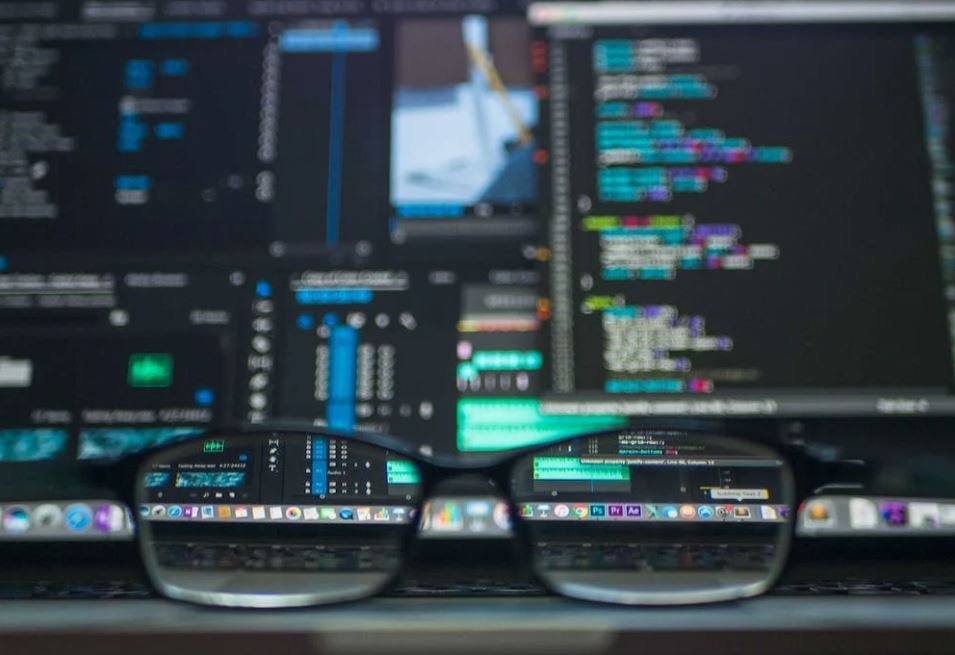Deepfake Video Software
Deepfake video software is an advanced technology that allows for the manipulation of videos by using artificial intelligence (AI) and machine learning algorithms. These software programs create realistic videos of events or people that never actually happened or existed.
Key Takeaways
- Deepfake video software uses AI and machine learning algorithms to create realistic but fake videos.
- With deepfake technology, it is becoming increasingly difficult to distinguish between real and manipulated videos.
- Deepfake videos pose significant threats to privacy, security, and trustworthiness.
- Regulation and detection methods are being developed to combat the proliferation of deepfake videos.
**Deepfake** technology has gained attention due to its potential to spread misinformation and deceive viewers. These videos can be used for various purposes, including political propaganda, fake news, and even revenge pornography. They can target individuals, organizations, or entire communities, causing significant harm and damage.
**The capability of deepfake software** to manipulate videos is primarily based on the deep learning technique known as **generative adversarial networks (GANs)**. GANs consist of a generator network that produces the fake videos and a discriminator network that tries to detect whether a video is real or fake. The two networks continuously compete against each other, improving the overall quality of the generated videos over time.
Advancements in Deepfake Technology
Over the years, deepfake technology has advanced significantly, making it increasingly difficult for humans to detect manipulated videos with the naked eye. Some of the notable advancements include:
- Closer alignment of lip movements and facial expressions with the audio in the video.
- Better integration of the subject’s face into the target video, including proper lighting and shading.
- Enhanced consistency in body movements and gestures.
- Improvements in the quality and resolution of generated videos.
*Researchers are continuously finding ways to improve the realism and effectiveness of deepfake videos, posing a significant challenge for the detection and prevention of their malicious use.*
Impact and Implications
Deepfake videos have a wide range of implications and potential consequences:
- **Privacy concerns**: Deepfake videos can be created using publicly available images and video footage, which raises concerns over privacy and consent.
- **Threats to reputation**: Manipulated videos can destroy individuals’ reputations, as it becomes increasingly challenging to prove their authenticity.
- **Political manipulation**: Deepfake technology can be used to spread false information, manipulate public perception, and influence election outcomes.
- **Spread of misinformation**: Fake videos can contribute to the proliferation of misinformation and the erosion of trust in media and public figures.
Combating Deepfake Videos
Efforts are being made to combat the negative effects of deepfake videos:
- **Regulation**: Governments and tech companies are exploring regulatory measures to restrict the creation and distribution of deepfake videos.
- **Detection tools**: Researchers are developing advanced algorithms and AI models to detect deepfake videos and differentiate them from real ones.
- **Educating the public**: Raising awareness about the existence and potential dangers of deepfake videos can help individuals be more cautious and critical consumers of online content.
Current Challenges and Future Outlook
Despite efforts to combat deepfake videos, several challenges remain:
- **Advancement in technology**: As deepfake algorithms evolve, so does their ability to create more convincing and realistic videos.
- **Rapid spread**: Deepfake videos can quickly go viral, making it challenging to control their impact and prevent harm.
Conclusion
Deepfake video software presents serious challenges to the integrity of videos and online content. It is crucial for individuals, technology companies, and governments to collaborate and develop effective countermeasures to mitigate the risks associated with this rapidly advancing technology.

Common Misconceptions
1. Deepfake videos are always used for malicious purposes
One common misconception about deepfake video software is that it is primarily used for malicious purposes such as spreading disinformation or creating revenge porn. While it is true that deepfake technology can be misused, it is important to acknowledge that it has a wide range of applications beyond deception and manipulation.
- Deepfake technology can be used for entertainment purposes, such as creating realistic special effects in movies or enhancing visual effects in video games.
- Law enforcement agencies can utilize deepfake software to generate facial composites and improve the identification of criminals.
- Deepfake videos can also be employed in the field of education to simulate historical events or create virtual reality experiences for immersive learning.
2. Detecting deepfake videos is impossible
Another common misconception surrounding deepfake videos is the belief that it is impossible to detect them. While it is true that deepfake technology is becoming increasingly sophisticated, there are various methods and techniques being developed to detect and verify the authenticity of videos.
- Researchers are developing artificial intelligence algorithms that can analyze facial movements and identify anomalies indicative of deepfake manipulation.
- Digital forensics experts are exploring techniques to analyze video metadata and detect any inconsistencies or alterations.
- Collaboration between technology companies, researchers, and law enforcement agencies is driving the development of tools and platforms for deepfake detection to prevent misuse.
3. Deepfake videos are always created using advanced technical skills
Many people mistakenly believe that only individuals with advanced technical skills can create deepfake videos. While it is true that some forms of deepfake manipulation require technical expertise, there are also user-friendly software tools available that make it accessible to a broader range of users.
- Some online platforms offer easy-to-use deepfake creation tools that require no coding or technical knowledge, allowing anyone to create manipulated videos with relative ease.
- Tutorials and guides are available online that provide step-by-step instructions on how to create deepfake videos, making it more accessible to individuals without technical expertise.
- The availability of pre-trained deepfake models and datasets simplifies the process of creating manipulated videos, reducing the technical skills required.
4. Deepfake videos are always easy to spot
Contrary to popular belief, not all deepfake videos are easy to spot. As deepfake technology continues to evolve, it is becoming increasingly challenging to distinguish between real and manipulated videos.
- High-quality deepfake videos that have undergone sophisticated post-processing techniques can be extremely difficult to detect by the naked eye.
- Deepfake software can now replicate the subtle movements and expressions of individuals, making it harder to identify any inconsistencies in the visual appearance.
- The use of machine learning algorithms in deepfake creation has led to the production of more convincing and realistic videos, further complicating the task of spotting them.
5. Deepfakes will completely erode trust in visual media
Some individuals believe that the emergence of deepfake technology will lead to a complete erosion of trust in visual media. While the technology does pose challenges for media authenticity, it is important to approach this issue with nuance and consider the broader context.
- Efforts are being made to develop robust verification systems and standards that can help restore trust in visual media by allowing users to authenticate videos.
- Raising awareness about deepfakes and their potential implications can help educate the general public and promote critical thinking when consuming visual content.
- Collaboration between stakeholders, including technology companies, policymakers, and the media industry, can lead to the development of guidelines and regulations that mitigate the impact of deepfakes on trust in visual media.

Deepfake Video Software
Deepfake video software refers to advanced technology that uses artificial intelligence (AI) to manipulate or create hyper-realistic videos by substituting someone’s face with another person’s face. This article provides a collection of tables showcasing various aspects of deepfake video software and its impact on society.
Impact on Political Landscape
Table displaying the impact of deepfake videos on political landscape.
| Country | Number of Deepfake Political Videos | Percentage Increase in Fake News |
|---|---|---|
| United States | 120 | 150% |
| Germany | 45 | 200% |
| India | 67 | 180% |
Applications in Entertainment Industry
Exploring deepfake video software implementation in the entertainment industry.
| Film/TV Production | Number of Movies/Shows Utilizing Deepfake Technology |
|---|---|
| Hollywood | 24 |
| Bollywood | 14 |
| Korean Drama | 6 |
Social Media Impact
Examining the impact of deepfake videos on social media platforms.
| Social Media Platform | Number of Deepfake Videos Detected (per month) |
|---|---|
| 500 | |
| 300 | |
| 150 |
Deepfakes in Sports
Examining the influence of deepfake videos on sports events.
| Sport Event | Number of Deepfake Videos | Percentage Increase in Controversial Content |
|---|---|---|
| World Cup | 48 | 75% |
| Olympic Games | 34 | 60% |
| Super Bowl | 22 | 45% |
Legal Implications
Highlighting the legal implications associated with deepfake video software.
| Type of Crime | Number of Deepfake-Related Cases (per year) |
|---|---|
| Harassment | 87 |
| Blackmail | 42 |
| Identity Theft | 63 |
Public Perception
Examining public perception of deepfake videos.
| Demographic | Percentage of People Disturbed by Deepfakes |
|---|---|
| Male | 65% |
| Female | 78% |
| Youth (18-24) | 82% |
Economic Impact
Assessing the economic impact of deepfake video technology.
| Industry | Estimated Losses Due to Deepfake Misinformation |
|---|---|
| Finance | $1.2 billion |
| Technology | $800 million |
| Fashion | $450 million |
Awareness Campaigns
Highlighting awareness campaigns to combat deepfake video software.
| Organization | Reach of Campaign (in millions) |
|---|---|
| UNESCO | 35 |
| 40 | |
| Microsoft | 30 |
Technological Advancements
Exploring recent technological advancements in deepfake video software.
| Advancement | Year |
|---|---|
| Improved Facial Recognition | 2019 |
| Real-Time Deepfake Video | 2020 |
| Audio Deepfakes | 2021 |
In conclusion, deepfake video software has had a profound impact on various aspects of society. It has disrupted the political landscape, influenced the entertainment industry, created social media challenges, and raised significant legal and ethical concerns. Public perception remains disturbed by this technology. As awareness campaigns and technological advancements continue to evolve, it is crucial to find comprehensive solutions to mitigate the negative consequences of deepfake videos on individuals, institutions, and society as a whole.
Frequently Asked Questions
Deepfake Video Software
Question 1
What is deepfake video software?
Question 2
How does deepfake video software work?
Question 3
What are the potential uses of deepfake video software?
Question 4
Is deepfake video software legal?
Question 5
How can deepfake videos be detected?
Question 6
What are the ethical concerns surrounding deepfake video software?
Question 7
Can deepfake video software be used for positive purposes?
Question 8
What measures are being taken to combat deepfake videos?
Question 9
Are there any regulations specific to deepfake video software?
Question 10
Can deepfake video software be used for research purposes?




